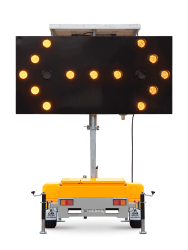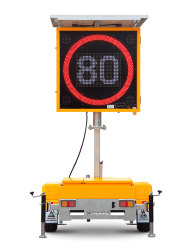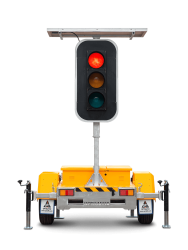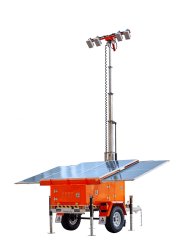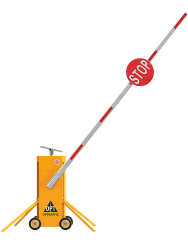
Introduction to Portable Traffic Signals
Portable traffic signals have emerged as a revolutionary solution for efficient traffic management, offering a flexible and cost-effective alternative to traditional signals. These innovative systems are designed to provide seamless control of vehicular and pedestrian movement, catering to the dynamic needs of modern road infrastructure.
What Are Portable Traffic Signals?
Portable traffic signals refer to compact and self-contained traffic control systems on wheels, replicating the primary function of traditional traffic signals. They typically include red-amber-green lights, traffic phases, and pedestrian phases, making them suitable for short-term or intermittent roadwork. These systems are available in different market types, including power battery and solar energy options.
How They Differ from Traditional Signals
The key distinction lies in their mobility and adaptability. Unlike traditional span wire signals, portable traffic signals do not require the installation of poles or a power source. This eliminates the need for extensive setup costs and allows for quick deployment in various locations as needed.
The Rise of Portable Traffic Signals
Recent Advances in Technology
The market for portable traffic signal systems is projected to experience significant growth due to technological advancements. With features such as remote monitoring and reprogramming capabilities, these systems offer real-time adjustments without the need for physical intervention at the intersection.
Growing Popularity and Usage
The increasing adoption of smart traffic management solutions has contributed to the rising popularity of portable traffic signals. Their game-changing technology allows for precise control of vehicle movement while ensuring safety and efficiency on the roads.
Exploring the Benefits of Portable Traffic Signals
Portable traffic signals offer a multitude of benefits that make them an attractive alternative to traditional signals. From cost-effectiveness to flexibility and mobility, these systems are transforming the landscape of temporary traffic management.
Cost-Effectiveness
Lower Installation and Maintenance Costs: One of the primary advantages of portable traffic signals is their cost-effectiveness. Unlike traditional signals that require extensive installation involving poles and power sources, portable signals eliminate these setup costs. This results in significant savings for contractors and project managers, making them a more economical solution for temporary traffic control needs.
Reduced Need for Manual Labor: Another key benefit is the reduced requirement for manual labor. With traditional signals, manual intervention is often necessary during installation, maintenance, and repositioning. In contrast, portable traffic signals can be easily relocated to different sites without the need for extensive manual labor, further reducing operational costs.
Portable traffic signal systems are a more economical solution compared to span wire signals. They do not require the installation of poles or a power source, which can significantly reduce the cost of setup. Furthermore, they can be easily relocated to different sites, making them a cost-effective solution for contractors who frequently work on various projects.
Flexibility and Mobility
Easy to Deploy and Relocate: The inherent mobility of portable traffic signals allows for easy deployment and relocation as needed. This flexibility enables efficient traffic management in diverse locations without the constraints associated with fixed traditional signal installations. Whether it’s roadwork at one site or special events at another, portable signals can be swiftly set up where they are required most.
Ideal for Temporary Traffic Management: Portable traffic signal systems serve as an ideal solution for temporary traffic management needs. They are commonly used in construction zones, roadwork projects, special events, and other situations that necessitate temporary re-routing of traffic flow. Their adaptability makes them indispensable tools for ensuring smooth vehicular movement in dynamic environments.
A portable traffic signal system is a temporary traffic control solution that is used in situations where traditional traffic signals are not feasible or practical. This system consists of portable signal heads that are attached to temporary poles and can be easily moved and set up at different locations as needed. Portable traffic signal systems are commonly used in construction zones, roadwork, special events, and other situations that require the temporary re-routing of traffic.
The benefits of portable traffic signals underscore their growing significance in modern-day traffic management strategies. Their cost-effectiveness and adaptability make them an invaluable asset for addressing temporary traffic control requirements effectively.
How Portable Traffic Signals Work
The Technology Behind Portable Traffic Signals
Portable traffic signals operate using advanced technology to ensure efficient traffic control in various settings. Understanding the underlying technology is crucial in appreciating the benefits and functionality of these innovative systems
Power Sources and Operation
The power sources for portable traffic signals vary, with some models utilizing solar energy while others rely on battery power. This diversity in power options allows for greater flexibility in deployment, catering to different environmental conditions and locations. The use of solar energy aligns with sustainable practices, reducing the reliance on traditional grid power and minimizing the environmental impact of traffic signal operations.
In addition to their power sources, portable traffic signals are equipped with efficient operation mechanisms that optimize energy usage. Advanced circuitry and LED lighting systems contribute to reduced power consumption without compromising visibility or functionality. These energy-efficient features not only contribute to cost savings but also support environmentally conscious practices in temporary traffic management.

Remote Control and Monitoring
One of the key technological advancements in portable traffic signals is their remote control and monitoring capabilities. Through wireless communication protocols, operators can remotely manage signal timing, phase changes, and system diagnostics from a centralized location. This real-time control enhances operational efficiency by allowing swift adjustments based on evolving traffic conditions or project requirements.
Furthermore, remote monitoring enables proactive maintenance and troubleshooting, minimizing downtime and ensuring continuous functionality. By leveraging data analytics and performance metrics, operators can optimize signal coordination and responsiveness to further enhance safety and traffic flow.

Setting Up Portable Traffic Signals
The installation process for portable traffic signals follows a systematic approach to ensure seamless deployment while adhering to safety standards.
Step-by-Step Installation Process
- Site Assessment: Before installation, a thorough assessment of the site is conducted to determine optimal signal placement considering factors such as visibility, road layout, and pedestrian pathways.
- Signal Assembly: The portable traffic signals are assembled according to manufacturer guidelines, ensuring proper alignment of lights and components for effective visibility.
- Power Connection: For battery-powered systems, connecting the power source is straightforward, while solar-powered units require positioning for maximum sun exposure.
- System Activation: Once assembled and powered, the system undergoes activation procedures to verify functionality before actual operation commences.
Safety Measures and Compliance
Portable traffic signal installations prioritize safety through compliance with regulatory standards and industry best practices:
- Visibility Enhancement: Reflective materials or additional lighting may be incorporated to enhance signal visibility during day or night conditions.
- Traffic Control Measures: Temporary barriers or cones are utilized to delineate signal-controlled areas and guide vehicular movement safely.
- Regulatory Compliance: Adherence to local regulations regarding temporary traffic control ensures legal compliance while promoting safe working environments for road construction crews.
Comparing Portable and Traditional Traffic Signals
In the comparison between portable and traditional traffic signals, it becomes evident that each type offers distinct advantages depending on the specific requirements of a given situation. Understanding the unique benefits of each system is crucial in determining the most suitable choice for effective traffic management.
Advantages of Portable Over Traditional
Quick Deployment in Emergency Situations
Portable traffic signals excel in emergency scenarios where immediate traffic control is essential. Their mobility and rapid setup enable swift deployment to manage unexpected road incidents or detours, ensuring minimal disruption to vehicular flow. This capability is particularly valuable during unforeseen events such as accidents, natural disasters, or sudden construction needs.
Supporting Roadworks and Special Events
The adaptability of portable traffic signals makes them an ideal solution for temporary roadwork projects and special events. These systems can be easily relocated to accommodate changing traffic patterns, providing seamless control without the need for permanent infrastructure. Whether it’s a short-term construction zone or a large-scale event, portable signals offer unparalleled flexibility in managing diverse traffic conditions.
Situations Where Traditional Signals May Be Preferable
Permanent Traffic Control Needs
In cases where long-term or permanent traffic control solutions are required, traditional signals hold an advantage. Fixed signal installations are well-suited for consistent and predictable traffic patterns at established intersections or urban areas with stable infrastructure. The reliability and durability of traditional systems make them indispensable for ongoing traffic management needs.
Larger, More Complex Intersections
Traditional signals are better equipped to handle the complexities of larger intersections with multiple lanes and intricate traffic flows. Their robust design and established positioning cater to the intricacies of high-traffic areas, ensuring efficient coordination of vehicular movement while prioritizing safety. In scenarios where precise signal synchronization is paramount, traditional installations offer a dependable solution.
Comparative Data:
- Portable signals: Provide quick deployment in emergencies.
- Traditional signals: Ideal for permanent traffic control needs.
- Portable signals: Support roadworks and special events effectively.
- Traditional signals: Suited for larger, more complex intersections.
The benefits of portable traffic signals underscore their growing significance in modern-day traffic management strategies. Their cost-effectiveness and adaptability make them an invaluable asset for addressing temporary traffic control requirements effectively.
Conclusion
In conclusion, the advantages of portable traffic signals over traditional systems are clear, positioning them as the future of efficient traffic management. The evidence from various sources underscores their game-changing capabilities and the growing demand for their deployment in diverse settings.

Encouraging the Adoption of Safer, More Efficient Roads
The market growth and demand for portable traffic signals further emphasize their role in ensuring smooth traffic flow and reducing the risk of accidents. Governments and regulatory bodies are increasingly emphasizing their deployment to address high-traffic areas, road construction projects, and events management needs. With their full-fledged traffic management capabilities, including turn lanes, pedestrian crossings, and emergency preemption, portable signals are poised to encourage adoption for safer and more efficient roads.

